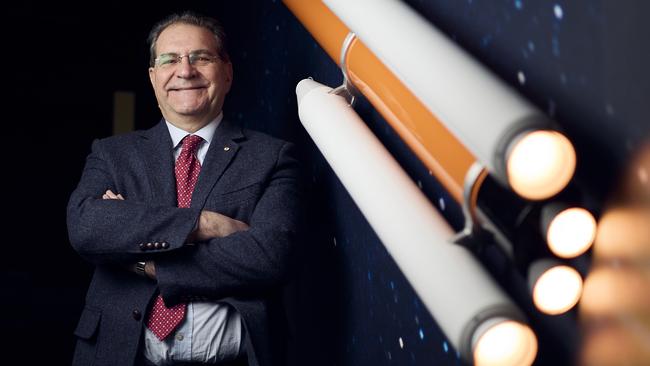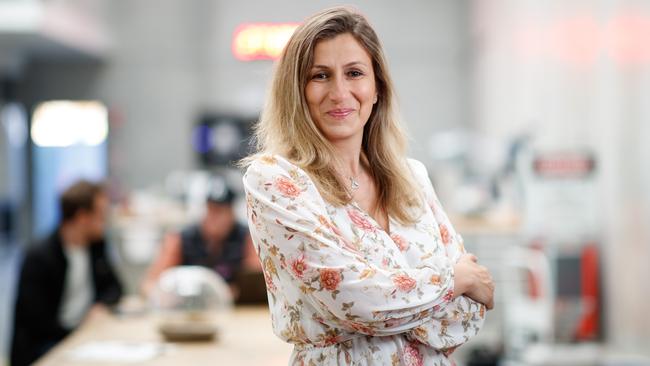NASA identifies Australia as key ally in new space race
A senior NASA official says Australia’s expertise in mining could see it play a key role in establishing a permanent human presence on the moon.
Business
Don't miss out on the headlines from Business. Followed categories will be added to My News.
Australia’s world-leading expertise in mining could see it play a major role in NASA’s flagship space program, a senior NASA official says, supporting the US space agency’s ambition of establishing a permanent human presence on the moon.
Walt Engelund, the deputy associate administrator for programs in the Space Technology Mission Directorate at NASA headquarters in Washington DC, says the two countries are in talks about how Australia’s fledgling space industry could support NASA’s Artemis program, which is planning future landings on the moon and Mars.
Mr Engelund will travel to Australia in October to deliver a keynote speech at the Australian Space Forum in Adelaide, hosted by The Andy Thomas Space Foundation.
He says closer ties are being built between NASA and the Adelaide-based Australian Space Agency, which was established in 2018.
“NASA recently held a meeting in the UK with participation from over 25 international space agencies, including Australia, to discuss NASA’s high-level goals and objectives for long term Moon to Mars planning,” Mr Engelund said.

“NASA is making every effort to share our exploration goals, and encouraging our international partners to identify how and where they want to participate on this journey - Australia is part of those conversations.
“The Australian foundation services (activities that support exploration missions) rover is a great example of how partners can capitalize on their in-country capabilities and contribute to the Artemis program.”
NASA’s Artemis program hopes to land the first woman and person of colour on the moon, and “establish the first long-term presence on the moon” at the Artemis base camp. It then wants to send astronauts to Mars.
Last October the Australian Space Agency signed a groundbreaking deal with NASA to send an Australian-built semi-autonomous rover to the moon, supporting a mission to collect lunar soil, known as regolith, and examine how oxygen could be extracted to support human life in space.
The $50m project is being funded by the federal government’s Moon to Mars initiative - a $150m investment in Australian companies and researchers aimed at making the country a “global space player”.
Mr Engelund said a consortium of Australian businesses and research organisations would soon be chosen to develop the rover, which would be launched as early as 2026.
“We know that there are resources on the moon, such as regolith that contains metals and oxides, and critical commodities for any long-term human endeavour there,” he said.
“Australia has obvious capabilities in large scale excavation on earth, which can be translatable to the development of lunar systems for needed foundation services.

“Our initial missions will be smaller ‘tech demos’ or proof of concept capabilities.
“So, assuming the small foundation services rover and ISRU (in-situ resource utilization) demos are successful, I expect there to be a demand for much larger and more capable rovers, consistent with our scaling up of the full suite of technologies and systems to provide resources for astronauts to live and work on the lunar surface for extended durations.”
ISRU, involving the extraction and processing of materials found in space into breathable air, water, fuel and other resources, is seen as key to creating a sustainable environment for human life in space.
The Australian Space Agency is aiming to grow the nation’s domestic space industry to $12bn by 2030, creating 20,000 new jobs.
The Andy Thomas Space Foundation founder and chief executive, Adjunct Professor Nicola Sasanelli, said the upcoming space forum would discuss emerging technologies in the industry, and opportunities to grow Australia’s space capabilities.
The three main topics will cover the federal government’s $1.2bn National Space Mission for Earth Observation, involving the design, build, and operation of four new satellites, the development of optical communications technology and the rover project with NASA.
“The event will bring together a range of international and national speakers, around 1000 attendees and an exhibition area welcoming more than 100 organisations,” he said.
Professor Sasanelli said Adelaide had emerged as the “space capital” of Australia, home to the space agency, Space Discovery Centre, SmartSat CRC and emerging space technology companies such as Myriota, Inovor Technologies and Fleet Space Technologies, which last year raised more than $35m from investors including Atlassian co-founder Mike Cannon Brookes’ investment firm Grok Ventures.
And the biannual space forum, which was first held in 2016, had become the most important event on the national space calendar, Professor Sasanelli said.
“The forum has been the backbone of the growth of the space industry, not only in Adelaide, but around Australia,” he said.
“It is estimated that the economic value for the Adelaide community is around $3m per forum, plus collateral space events organised during the week of the forum.
“The importance of a national industry event, held every six months in the space capital of Australia, is clear.”
The Australian Space Forum will be held at the Adelaide Convention Centre on October 25.




